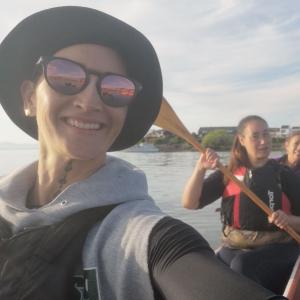Dr Vanessa Lee (Yupungathi and Meriam Nation)
Nature of the emergency: COVID19 across Australia, contact tracing, Indigenous identification
Affected Area: To reduce infection rates of COVID19 in Australia the government introduced contact tracing. Although a good initiative at the time the implementation process varied across the States and Territories. From the Federal level contact tracing involved Border Force and the agencies within the States and Territories. The issue with this was the clash between health services, as role and responsibilities were not clearly defined. Contact tracing was a measure to monitor the rate of infection of COVID19 and to ensure social distancing and physical isolation were maintained. Police were deployed across States and Territories to enforce these measures. On April 4th, 70,000 extra police were deployed to enforce the new Public Health Laws that included maintaining physical distancing, across NSW. This deployment of police to low socio-economic areas has led to an increase of arrests of Indigenous people, yet the high prevelance of COVID19 cases were in affluent suburbs across Sydney. However, as there is no separation of Indigenous data in the COVID19 infection rates or deaths it is unclear as to why police presence was increased in suburbs where a high number of Indigenous people reside. Police are also issuing fines to Aboriginal and Torres Strait Islander young people of $1000 for breaching these measures regardless that the young people may have a valid excuse not to be in the family home (i.e. domestic violence or over-crowding). The measures from the crisis are forcing more Indigenous people to stay in family homes where substantial overcrowding has already existed, and domestic violence orders may have already been initiated or implemented.
Affected population: The distribution of fines to low socio economic areas where the majority are Indigenous compared to minimal fine administered to affluent suburbs where the majority are non-Indigenous highlights the inequity that continues within Australia.
Health Impact: Increased systemic racism causing unnecessary trauma, anxiety and depression and re-exposure to domestic violence situations.
Vital needs: Access to essential items and appropriate housing (overcrowding), access to mental health services.
Critical constraint: social, political and geographical
Conclusion: Contact tracing is necessary to reduce the spread of COVID19, however, abuse of power that identifies Indigenous people as breaching Public Health laws is unnecessary considering that the high prevalence of cases of COVID19 have been in affluent suburbs. Furthermore, there is insufficient evidence to support the association between COVID19 and increased police presence within Aboriginal and Torres Strait Islander communities to address the COVID19 crisis.
Supporting news item: https://www.sbs.com.au/news/concerns-police-using-coronavirus-powers-to-target-marginalised-communities-in-australia
Dr. Vanessa Lee - BTD│MPH│PhD│SFHEA
Yupinguthi & Meriam
Social Epidemiologist - Indigenous Health
Snr Lecturer│FHS│The University of Sydney
Mail: Faculty of Medicine and Health, O164
P.O Box 170, Lidcombe, NSW 1825
Ph: 0417 983 001│E: vanessa.lee@sydney.edu.au
Independent Director Suicide Prevention Australia https://www.suicidepreventionaust.org/about-us/meet-our-board/
Alternate Chair, Australia ILGA Oceania for ILGA World UN

He Kōrero | Our Stories
Neuroscientist Nicole Edwards is establishing her own lab at the University of Auckland and is eager to tautoko students interested in a career in brain research.
AUT senior lecturer Deborah Heke encourages wāhine Māori to cherish their connection with te taiao.
Tairāwhiti local Manu Caddie is a vocal critic of forestry companies engaged in unsustainable land practices in the rohe. He shares his insights on what needs to change".


